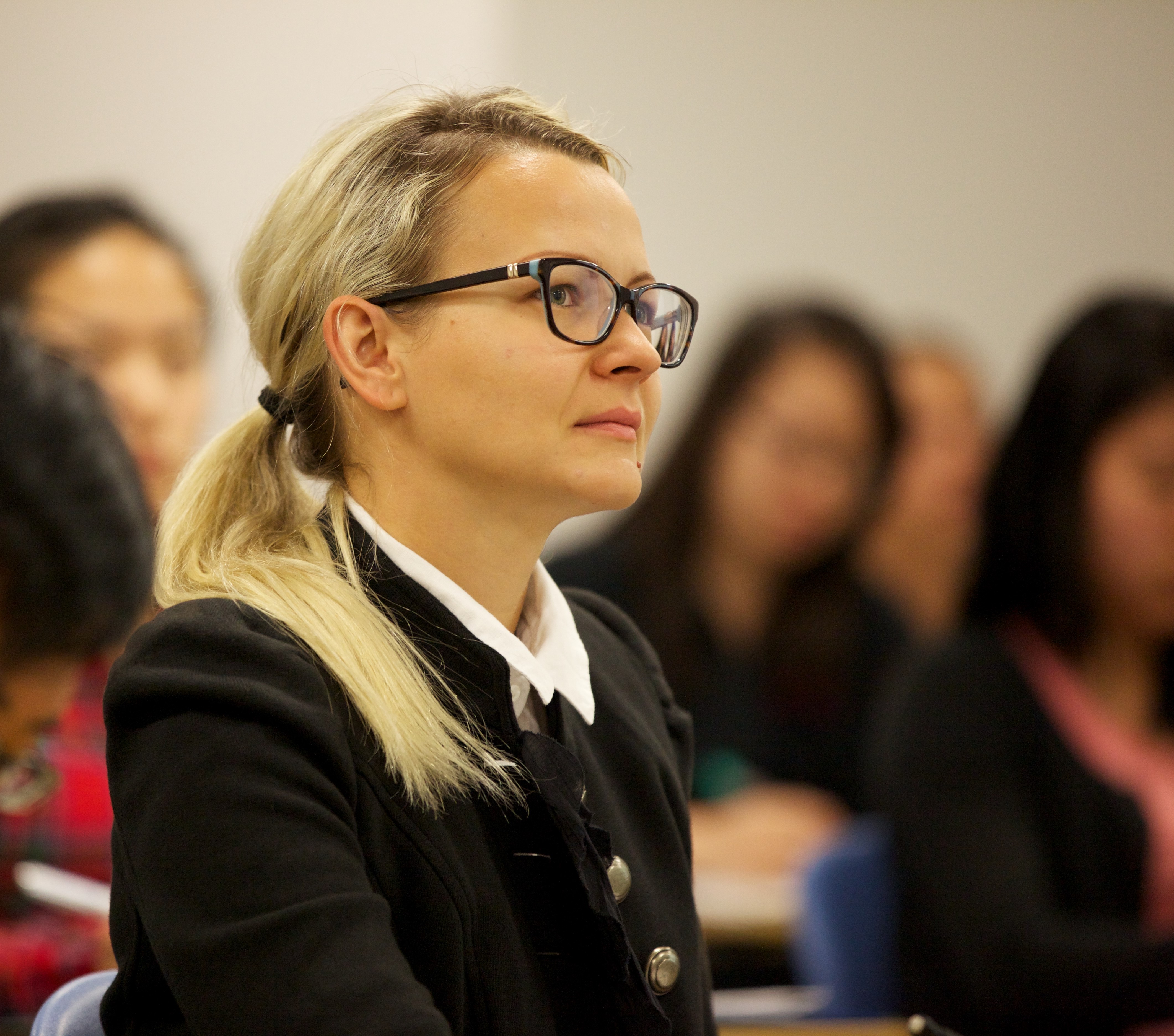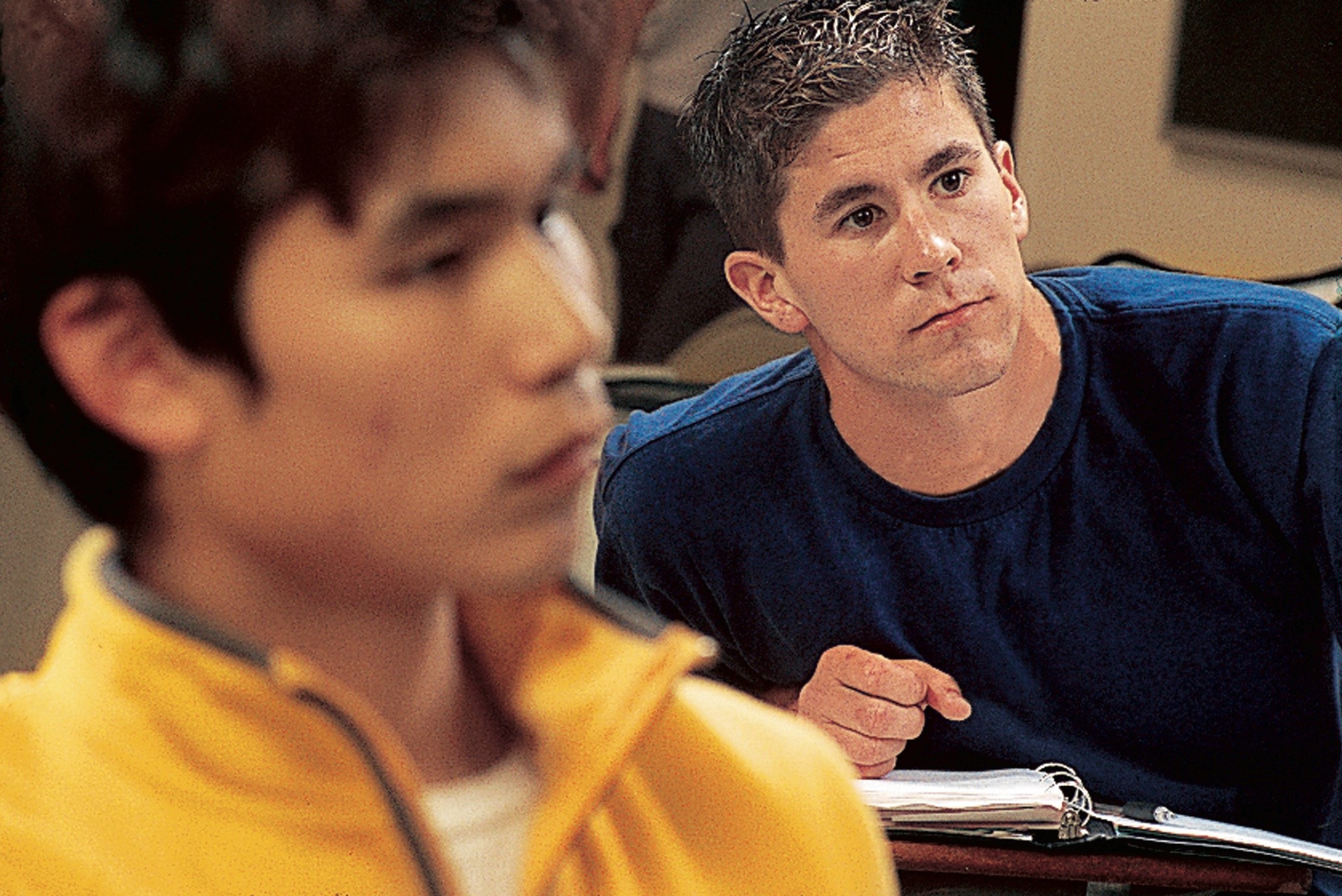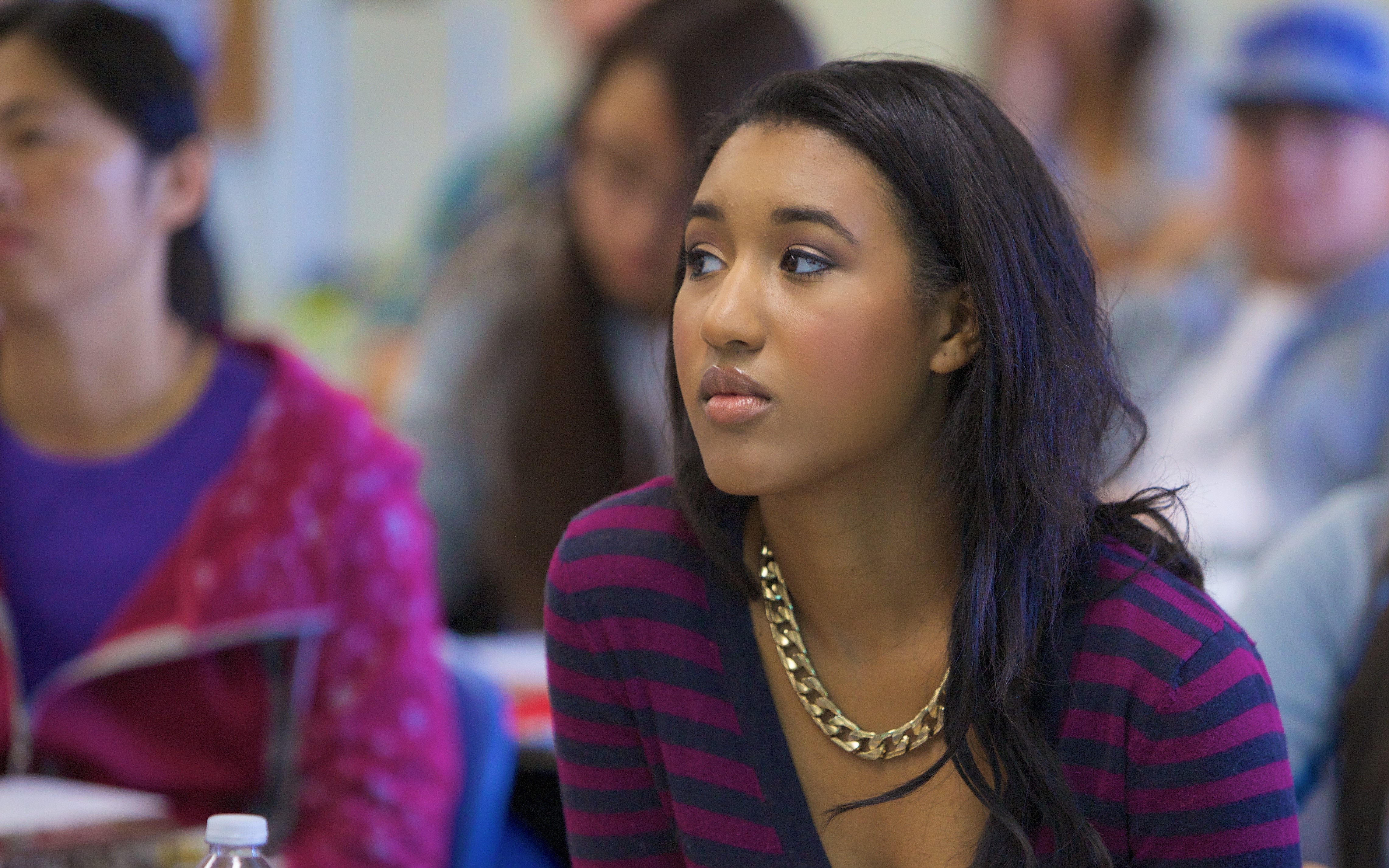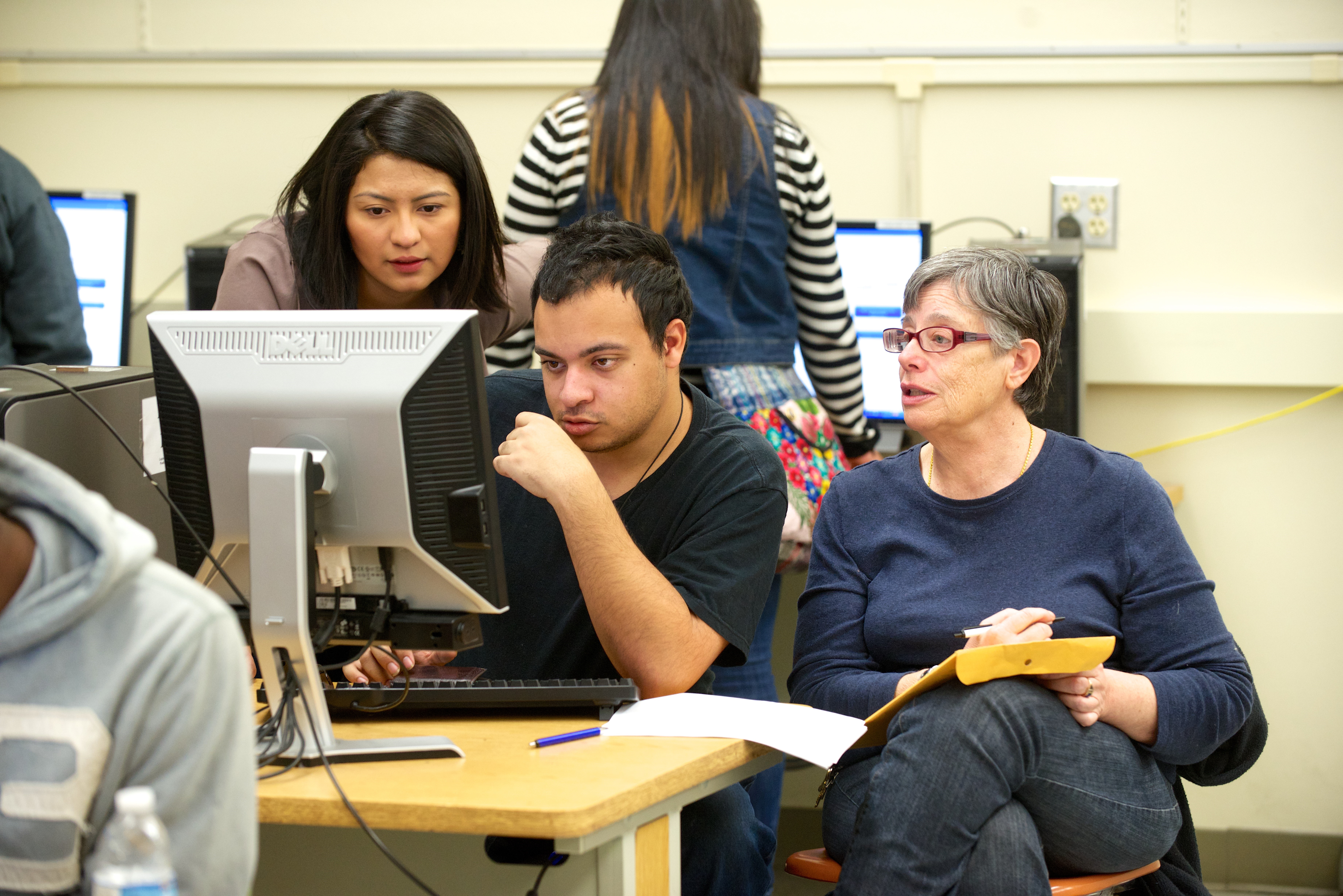Working with Students Who Have Disabilities
 Read More about Sophia | Presents with Anxiety & Awkwardness
Read More about Sophia | Presents with Anxiety & Awkwardness
Sophia | Presents with Anxiety & Awkwardness
Sophia is a recent transfer student who does not introduce herself at the beginning of the term and initially does not send their accommodations notification to you, either. She is quiet and tends to keep to herself. You notice she fidgets often during lectures and does not appear to be taking notes. The group that she has been assigned to for an upcoming project says that she is doing the work, but reports several odd interactions with her. She is also not submitting some of her assignments by the deadline.
You meet with her during office hours to discuss these issues, where she discloses that she has accommodations through the Accessibility Services office and sends her accommodations notification. She states that wanted to try to take her courses without the use of her accommodations, but now realizes she needs them if she is to succeed. Because Sophia’s accommodations notification has her accessibility counselor’s email at the bottom (below her signature), you email her counselor and work with both her and her accessibility counselor to determine how best to implement her accommodations and get tips about how her disability affects her in the course setting.
 Read More about Connor | Has a 'Coach'
Read More about Connor | Has a 'Coach'
Connor | Has a 'Coach'
Connor is a first-time freshman who will be in your upcoming GS course. Before the start of the term, he sends you an email and introduces himself as a College Link Program student. This means that he will have an in-course shadow when he attends your course to discreetly make sure he is maintaining focus and participating when appropriate.
Connor is doing well in your course overall, but he is submitting some assignments after the deadline. His accessibility counselor, Jim, suggests a meeting between you, Connor, and him to discuss how to best handle this. Since Connor has the accommodation of “Extension of assignment due dates, pending collaboration with student, instructor, and accessibility counselor”, you work with him and his counselor to make it possible for him to submit his assignments up to 48 hours after the deadline. The only exception is an upcoming group project, which requires him to submit his portion of the work at the same time as his groupmates.
 Read More about Ryan | Agreement Accommodations
Read More about Ryan | Agreement Accommodations
Ryan | Agreement Accommodations
Ryan starts the semester by submitting his accommodations notification to you and introduces himself. The notification has, among others, the accommodations “modification of course attendance requirement, pending collaboration between student, instructor, and accessibility counselor” as well as “extension of assignment due dates, pending collaboration between student, instructor, and accessibility counselor”. He does not go into detail about these in his email.
A couple of weeks later, you receive an email from Ryan’s accessibility counselor, Susan, indicating he would like to have a conversation with you about both of these accommodations. While this conversation can take place via phone, video, or in person, you choose to have it by email. The counselor mentions an “agreement” that can be made (formal with signatures or informal by email, phone, or video) about how many absences Ryan can have before he gets penalized and how late he can submit assignments should he experience an exacerbation of his disability.
Because your course does not penalize students for absences, that is something you tell Ryan that he does not need to worry about. All you ask is that either he or his accessibility counselor email you when it happens. Regarding the assignment extensions, it is possible for Ryan to submit some assignments 48 hours after the deadline, but for the assignments that are part of group work, that is unworkable.
 Read More about Aisha | Needs Accessible Materials
Read More about Aisha | Needs Accessible Materials
Aisha | Needs Accessible Materials
In the weeks leading up to the first day of classes, you will receive an email from the Accessible Media Office, indicating you will have a student who is blind or with low vision. The email states that all of your material will need to be “accessible”, meaning that any text needs to be able to be read by a text-to-voice software (aka a screen reader).
Because your paper-based textbook was declared early, Aisha had time to request that it be converted into an electronic format and she will have access to it at the start of the term. Additionally, you work with the Accessible Media Office to determine how your content can be accessible moving forward. For now, Aisha will submit any other course materials to them for conversion.
 Read More about Devin | Has Sign Language Interpreters
Read More about Devin | Has Sign Language Interpreters
Devin | Has Sign Language Interpreters
Because Devin notified Accessibility Services of his need for Sign Language interpreters and/or real-time captioners in your upcoming course, you receive an email from both our Interpreting & Real-Time Captioning office, as well as our Assistive Technology Services Office, before the beginning of the term indicating several things:
- Scheduling: If there are any schedule changes in synchronous (or on-campus) courses, the Interpreting Office needs to be notified immediately since this affects service providers' schedules. For example, if a course session is cancelled or added, changed to asynchronous, or changed to an "optional" session.
- Captioning: All audio course materials need to be captioned. That process can be done by...
- Zoom: If the instructor uses breakout rooms, the service providers must be placed in the same room as the deaf or hard of hearing student. Also, it's extremely helpful for instructors to arrange recurring Zoom classroom links (and passcodes, if applicable) ahead of time.
 Read More about Mateo | Math Difficulties
Read More about Mateo | Math Difficulties
Mateo | Math Difficulties
Mateo has been struggling with your course material (mathematics) and has failed the first midterm. He meets with you shortly after that result and indicates that he has always experienced difficulty with math, and that he has for as long as he can remember. He does not, however, indicate he has been diagnosed with any kind of learning disability.
Despite this, you recognize that the difficulties he is experiencing are similar to those of students who have had accommodations with Accessibility Services and you mention that to him. This is a new idea to Mateo, but he contacts Accessibility Services to see how we can help.
 Read More about Megan | Accessible Furniture
Read More about Megan | Accessible Furniture
Megan | Accessible Furniture
On the first day of your course, you notice there is a desk without a chair in the front of the classroom with a reserved sign on it that lists the days and times your course meets and someone’s initials. A minute before the beginning of the course, Megan arrives and utilizes the reserved desk. At the end of the course meeting, Megan sends her accommodations notification to you. It lists two accommodations:
- Classroom: Table
- Classroom: Student may need to arrive late to course
As the term progresses, Megan arrives late to course by five minutes on average once per week. Thankfully she is able to keep up with the material due to the lecture notes and video recordings being readily available via Blackboard. However, her reserved table is frequently in different places in the classroom before course begins and it needs to be moved back to where Megan can access it.
Megan informs Accessibility Services that her table is frequently not where it should be, and AS works with the other instructors who use that classroom to make sure Megan’s reserved table stays at the front of the classroom so it is accessible to her.